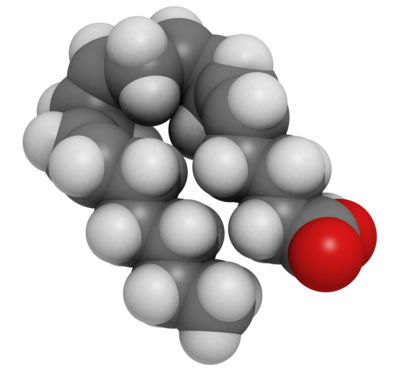The future of prostacyclin
Future medical technologues may overcome side effects of prostacyclin-based treatments and make them more reliable.
Published online 29 April 2015

Arachidonic acid within the endothelial cells of blood vessels is synthesized into prostacyclin
© molekuul.be / Alamy
The discovery of prostaglandin in 1976 revolutionized the treatment of a rare cardiovascular condition called pulmonary arterial hypertension. However, current treatments are plagued by many unwanted side effects, and so its full therapeutic potential has not yet been realised.
In a new review, Jane Mitchell of the National Heart and Lung Institute in London and her colleagues summarise what is known about prostacyclin synthesis and function, how this knowledge is being applied to produce treatments, and speculate on how nanomedicine and stem-cell-based treatments of the near future might overcome the limitations of current therapies1.
Prostacyclin is a powerful hormone that is released by endothelial cells lining the blood vessels. It protects the vessels by relaxing them and inhibiting the formation of blood clots. The hormone is synthesized from arachidonic acid within the endothelial cells by a series of chemical reactions catalysed by the concerted actions of the enzymes cyclo-oxygenase and prostacyclin synthase.
Once formed, prostacyclin is actively exported out of endothelial cells by transporter proteins embedded in the membrane. It then exerts its powerful effects by binding to specialized cell-surface and nuclear receptors.
Since the late 1990s, prostacyclin-based therapies have been used to treat pulmonary arterial hypertension, a rare cardiovascular condition characterised by prostacyclin imbalance, blood vessel constriction and blood clot formation.
Pulmonary arterial hypertension is fatal, with sufferers dying less than two years after diagnosis if left untreated. Prostacyclin therapies have improved patient outcomes, extending life expectancy by 5–7 years. Many clinicians regard it as the most effective treatment available for the disease. But there’s a downside; all current therapies that use prostacyclin are associated with serious side effects, especially reduced blood pressure, along with flushing, jaw pain and nausea.
What’s more, many of these therapies have to be administered in small doses delivered by continuous infusion, which can lead to sepsis or blood poisoning.
Future therapies could overcome these limitations. Nanotechnology could soon be used to develop slow-release drug delivery systems that target specific blood vessels, which would likely make the therapy more effective while avoiding sepsis and may make the disease less fatal than it is. Using stem-cell technology, researchers may one day be able to replace the endothelial cells damaged in the condition.Reference
- Mitchell, J. A. et al. Role of prostacyclin in pulmonary hypertension. Glob. Cardiol. Sci. Pract. 2014, 53 (2014). | article
DOI: 10.1038/qsh.2015.57

